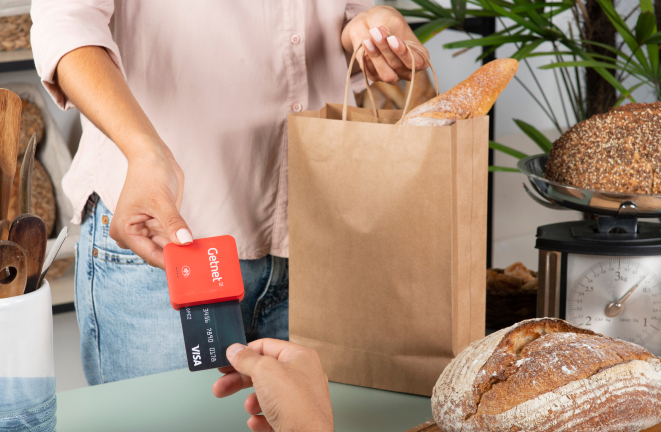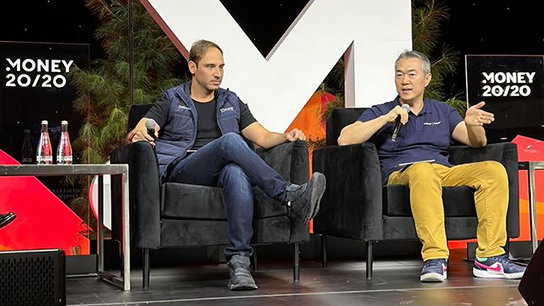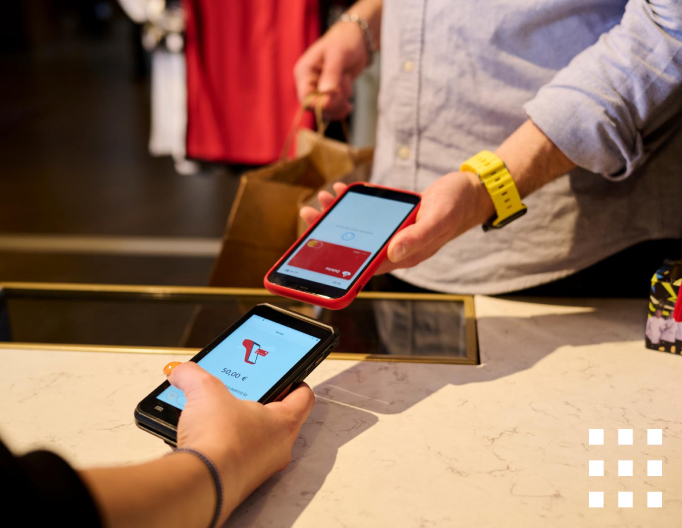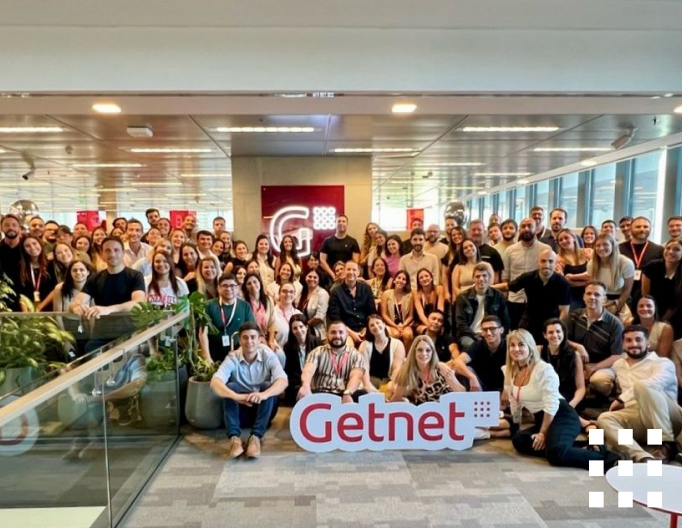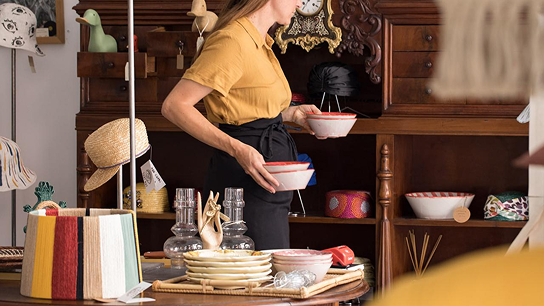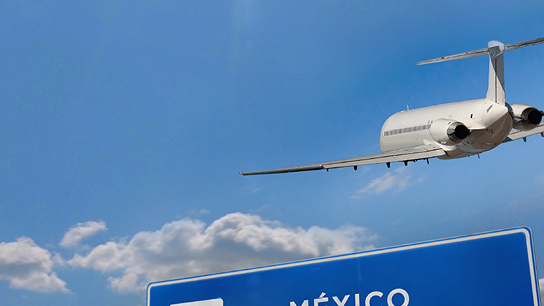The role payments play in elevating travel and tourism
Payments can make or break a travel experience. In fact, approximately 80% of customers abandon their booking on travel websites and failed payments, or lack of flexible payment options, are key reasons for this.
Ignasi Romeu
Commercial Planning Director at Getnet Europe
- e-commerce
- Digital Payments
The future of eCommerce: How businesses can meet the changing payment needs of the modern shopper
The ability to shop online has fast become a baseline expectation for consumers when making purchases. Since gaining mainstream popularity over 20 years ago, eCommerce has continued to experience relentless growth. In fact, global eCommerce sales are expected to total $4.8 trillion this year and represent 23% of all retail sales by 2027.
Luciano Decourt Ferrari
Chief Sales Officer at Getnet Brazil
- Payment Trends
- Spain & Portugal
The 2025 payments landscape in Spain and Portugal
The payment landscape across Spain and Portugal is set to undergo a transformation in 2025, driven by technological innovations and a relentless focus on customer experience. These changes will redefine how consumers and businesses interact with payment technology.
Ruben Justel
CEO of Getnet Europe
- Digital Payments
- Merchants
A year in review: the key fintech developments that shaped 2024
Every fintech landscape is dynamic and different from one another, yet 2024 was a transformative year for them all. Specifically, Latin America (LatAm), Spain and Portugal all saw significant advancements that will shape the future of financial services in each region.
- Digital Payments
- Latin America
Celebrating Getnet Argentina’s fourth anniversary
2024 marked a whole decade since Santander acquired Getnet that helps businesses accept payments securely, while providing the best checkout experience to customers.
Leo Salovich
CEO Getnet Argentina
Understanding generational shopping preferences: The key to success during peak season
As we approach the end of the year, the peak sales season is almost upon us. If merchants want to achieve success during such a competitive period, they need to get their house in order now.
- Digital Payments
- Latin America
The future of cross-border payments in Latin America
Payments are booming in Latin America. In 2020 e-commerce sales were estimated at $85 billion, and according to forecasts this will almost double by 2025 – rising to $160 billion. As one of the world’s fastest growing e-commerce markets, demand for efficient cross-border payments is set to soar.
- Digital Payments
- In-person Payments
Optimising your checkout process
Payment processing is a make-or-break aspect for any business, and payment optimisation is a key part of that. It is the process of enhancing a business' payment infrastructure and operations to maximise efficiency, security, customer experience, and profitability.
Guido Giudice
Global Products Director at PagoNxt Merchant
- Payments Partner
- Digital Payments
Navigating the payment landscape: Top tips for SMEs in choosing the right partner
Small and medium-sized enterprises (SMEs) are the backbone of the economy, providing jobs, innovation, and economic growth. They represent 90% of businesses, more than 50% of employment worldwide and contribute up to 40% of national income in emerging economies.
What are the most popular payment trends in Mexico?
As the second biggest eCommerce market in Latin America, Mexico boasts a payment landscape as diverse as its culture, blending traditional and modern methods. However, despite efforts to minimise cash circulation, a significant proportion of Mexico's almost 130 million people remain underbanked.
Pablo Jiménez
CEO Getnet Mexico
- Travel & Tourism
- Mexico
- Digital Payments
How is Mexico harnessing the travel boom?
In 2020, the travel industry was on the brink of extinction. Yet today, it thrives, undergoing a transformation that few could have foreseen.
Irving Damian
Director of Commercial Open Market, Getnet Mexico
- Travel & Tourism
- Digital Payments
Travel and tourism: 2024 payment trends
The travel industry has undergone a major transformation. The future of travel and tourism will be defined by contactless payments, and ongoing innovation will only elevate the passenger experience and reduce pain points further. This blog will explore my 2024 travel and tourism payment predictions.
Juan Anton Arespacochaga
Global Head of Corporate Sales PagoNxt Merchant
- Money 20 20
- Digital Payments
What´s next for the Latin America payments ecosystem?
As Latin America continues its growth fuelled by instant payment rails, innovative cross-border solutions, and neobank (banks that operate exclusively using online banking) partnerships, the opportunities have never been better
Recently, I had the privilege of participating in a panel discussion at Money 20/20 Las Vegas, delving into the future of the world’s fastest-growing payments market. In this blog, I’ll outline how to position your business at the forefront of success in Latin America. Latin America stands out as an incredibly diverse region, comprising 33 countries with 14 different currencies that span large nations to some of the smallest economies globally. Although the proportion of people who do not have an account has been decreasing since 2014 in LAC, 41.67% of adults in the region still lack access to an account according to Global Findex figures for 2021. Because of this, the payments ecosystem in Latin America has been undergoing significant transformations, propelled by concerted efforts to bolster financial inclusion and by technological advancements and evolving consumer behaviours. The intricacies of the payment landscape in Latin America are tied to consumption patterns. For Latin Americans, the freedom to choose their preferred payment methods is important. The economic, political, and cultural nuances of the region create a scenario where most consumers rely on alternative payment methods to conduct online transactions. Evidently, the population demonstrates a willingness to adapt their payment habits based on circumstances. Merchants, in turn, must not only acknowledge but embrace this diversity, offering payment methods tailored to local preferences.
Carlos Nomura
Head of Global Product Management, PagoNxt Merchant
How can merchants prepare for the holiday season?
Shopping festivities have firmly etched themselves into the annual calendars of retailers worldwide. Events such as Black Friday and Cyber Monday, as well as Christmas and New Years sales, have become global phenomena, with their influence extending well beyond their American origins.
In 2022, the United States witnessed record-breaking online sales, with Black Friday alone raking in an impressive $9.12 billion. This figure marked an increase from $8.92 billion in 2021 and $9.03 billion the previous year. It’s not just limited to the U.S. In Brazil, the sales in 2022 reached an impressive BRL 6.1 billion, approximately USD 1.2 billion, while countries like Argentina, Mexico, and Colombia have also seen remarkable growth. On average in Spain in 2022, consumers spent an average of €200 each on global ‘discount day’. Another common sales period during the holidays is the lead up to Christmas. Last year consumers in Spain spent around €735 per person d uring the Christmas season, an increase of 15% on 2021’s festive period. In the US the average American spends around $867 on presents around the Christmas holidays, while in the UK Brits spent around £430 per person on gifts. However, considering macroeconomic challenges, shoppers are still eager to consider both online and in-store avenues for deals. Below we explore ways that merchants can prepare for the sales season, guaranteeing that the year's final quarter becomes their most lucrative period yet.
- Education
- Digital Payments
Education in the digital age: the adoption of digital payments
Education is constantly evolving, and recent years have witnessed a remarkable shift driven by technological advancements.
In 2020, online education took centre stage, accompanied by the rise of educational subscriptions, micro-courses, and digital learning platforms. Coursera, for example, witnessed a 66% increase in its user base while EdX saw a 161% year-on-year growth in new users. This surge in popularity can be attributed to the flexibility of online learning, enabling people to engage with educational content at their own pace, without committing to lengthy traditional courses. Today, the demand for personalised educational content is higher than ever, and digital education platforms are stepping up to meet this expectation. These online platforms empower people to select courses that align with their interests and work through them on their own terms. Micro-courses, which focus on niche subjects, have also surged in popularity. According to research by Technavio, micro-courses will become the dominant form of digital education by the end of 2023. Their appeal lies in their ability to deliver engaging, cost-effective, and diverse learning experiences.
- Sustainability
- Digital Payments
This is how next-gen payments can help merchants meet ESG objectives
We’re living in the decisive decade for climate action. The last eight years have been the eight hottest in the history books, and 2023 is on track to obliterate records.
You don’t have to look far to see the early impacts of climate change. Floods, droughts and extreme weather events are continuing to cause widespread damage and disruption to communities around the world. The crisis is taking a human, economic and environmental toll unlike anything we’ve seen before. Despite the negative headlines, we can all take bold, immediate action to address climate change and curb its impacts. This includes merchants – from sole traders to global eCommerce giants - who will play an increasingly important role in the route to net zero. While many net zero initiatives are driven by demand from ethically-minded consumers, investors are increasingly prioritising robust environmental, social and governance (ESG) progress from businesses. So how do payments fit into the large challenge faced by merchants?
- Digital Payments
- e-commerce
How merchants should prepare for the next generation of shoppers
With the Northern hemisphere well and truly in the throes of summer, school holidays are on the horizon. And with those holidays, come merchants' newest generation of shoppers to impress; Gen Z.
These young shoppers have $360 billion in disposable income, more than double what was estimated three years ago. Even though many might still be too young to be employed, they still have a huge impact on the buying decisions of their households. What does this mean? Merchants need to ensure they are appealing to this generation who have a huge spending power. And in order to appeal to Gen Z, it’s important to understand what they are really looking for. Below we discuss 4 ways merchants can prepare for the next generation of shoppers.
Why embedded finance is transforming fintech
Over recent years, embedded finance has emerged as fintech’s most exciting new frontier. However, what actually is embedded finance and what are its current and future use cases?
Over recent years, embedded finance has emerged as fintech’s most exciting new frontier. Embedded finance will account for more than $7 trillion financial transactions in the US by the end of 2026 — equivalent to over 10% of the total transaction value. This represents a huge opportunity for providers, enablers and distributors of embedded finance products and services. However, what is embedded finance and what are its current and future use cases?
Fabrice Mendez
Head of Partnerships at PagoNxt
- Transport industry
- Digital Payments
The future of digital payments in the public transport industry.
COVID-19 hit the public transport industry hard in 2020, as measures to contain the virus led to an almost complete shutdown of travel worldwide.
However, ridership has generally recovered from pre-pandemic levels. The pandemic has also had positive effects on public transport, with research showing that disruptions can be a catalyst for shifts towards more sustainable transport behaviours. Many countries have pledged to help support vital public transport services to ensure they remain popular, and this can only help improve the service and work towards a sustainable future. During COVID-19, consumers began following advice to reduce cash handling and pursuit of tap on, tap off (TOTO) and the replacement of smart cards with digital apps has followed. This has exposed opportunities for the digital travel purchase journey, and payments are a big part of this. Despite this, not all public transportation in Europe accepts digital payments even though complex payment options often act as a barrier to travel and are the cause of many complaints. Navigating public transport systems can be intimidating, especially in unfamiliar places or in cities with large, complex networks, but technology can make it simpler and more convenient.
Antonio Babío
Corporates & CIB Team at Getnet Europe
- Open banking
- Digital Payments
4 things every merchant needs to know about Open Banking
Since launching Open Banking has sparked a revolution in the financial services industry. With momentum continuing to build, we explore the importance of Open Banking for consumers and merchants.
Since the launch of the EU’s Payments Service Directive 2 (PSD2) in 2018, Open Banking has sparked a revolution in finance. From payments to personal finance management, consumers and merchants alike have embraced Open Banking. In 2023, more than 7 million consumers and SMEs used Open Banking services in the UK, with the milestones falling at pace. It’s now clear that momentum is behind Open Banking in some markets, but there is still a significant way to go. In this blog, we’ll outline why Open Banking is so important — for consumers and merchants alike.
David Mora
Global Head Data & Analytics PagoNxt Merchant Solutions

